The Hirota Tsumugi Blog
- 2022.03.29
- Understand Kasuri Technique of Oshima-tsumugi / “Katasu” and “Hitomoto”
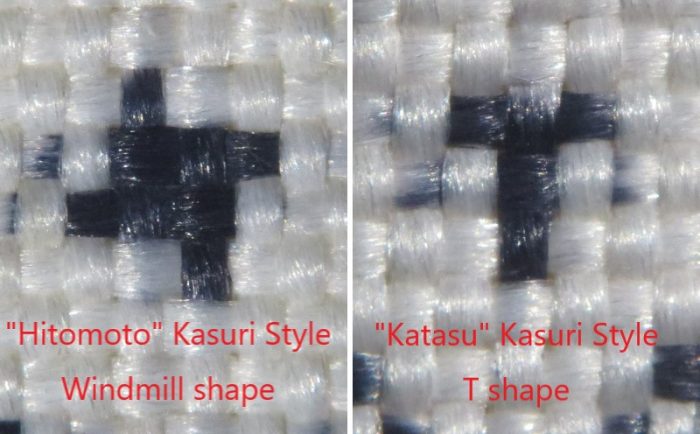
Oshima Tsumugi is a traditional silk textile and one of the most famous kimono textiles in Japan made in Amami Oshima island, Kagoshima prefecture. It is also known for the world’s most minute and precise ikat textile.
If we look very closely the surface of the fabric, the patterns are constructed from a countless number of extremely small dots. Surprisingly, each dots less than a square millimeter are an independent ikat created by intercrossing the undyed warp and weft ikat threads. All the dots are arranged and adjusted by hands both at ikat dyeing and handweaving to create the spectacular beautiful woven patterns.
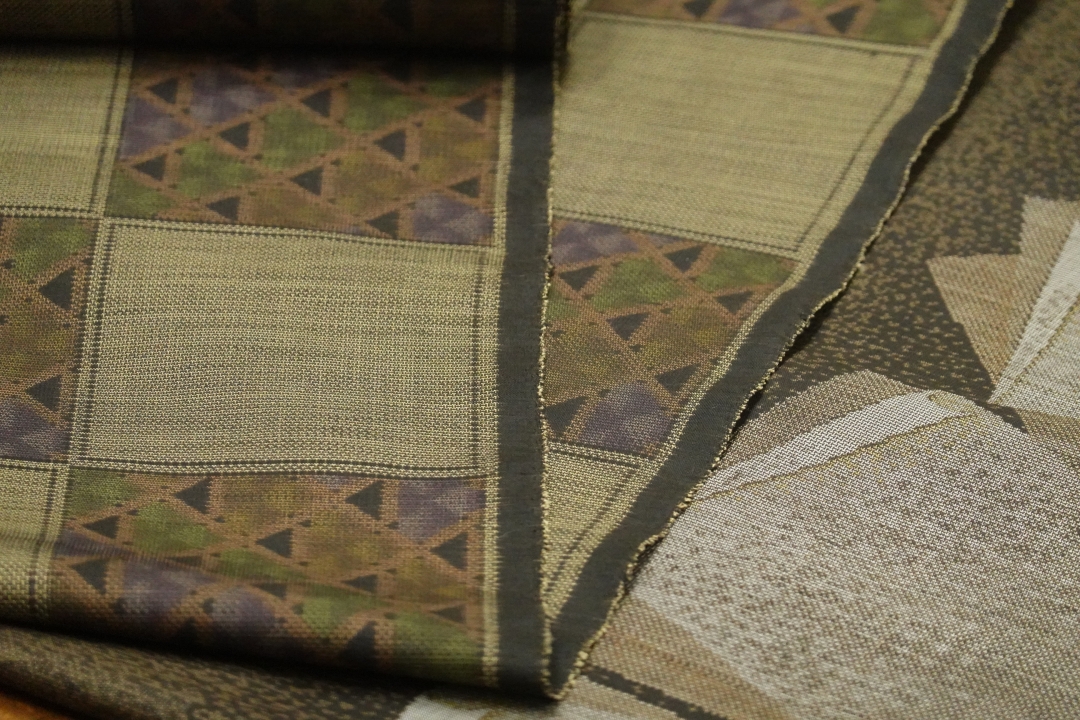
“Katasu” and “Hitomoto”
There are 2 types of the Kasuri dots unique to Oshima Tsumugi: “Hitomoto” and “Katasu“.
Originally, all Oshima Tsumugi were woven by Hitomoto, which consists of 2 warp and 2 weft Kasuri yarns to create the windmill like shape dots. On the other hand, the relatively new technique called Katasu, consists of 1 warp and 2 weft Kasuri yarns to construct the T shape dots.
*Katasu literally means ‘half’ in Japanese, as the warp kasuri yarns used come down by half from the Hitomoto one.
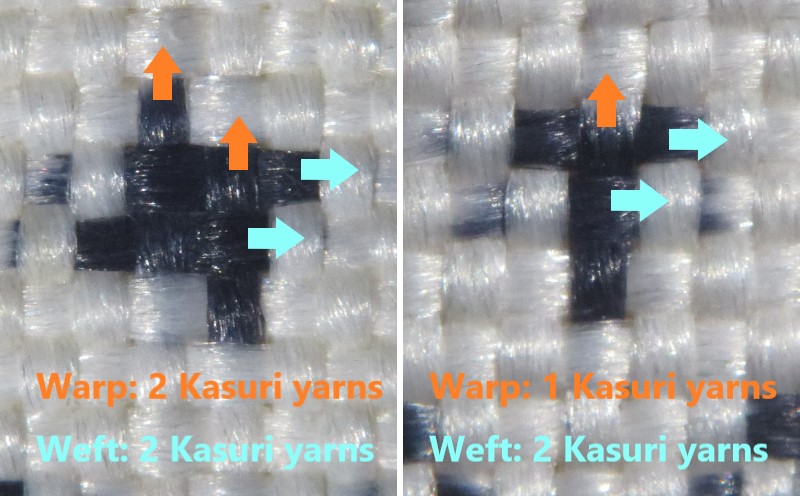

Compare the Hitomoto and Katasu surfaces
The Hitomoto fabric surface has more powerful and vivid kasuri dots than the Katasu surface.
In fact, the Hitomoto surface has the larger yarn-dyed area in total and fewer the marginal area than the Katasu surface. In terms of the ratio, the Katasu surface is smaller about 64% of the Hitomoto.
The Katasu is much easier to weave than the Hitomoto. For the weaver, the Katasu fabric require comparatively less focus for weaving it. Because, whereas Hitomoto Kasuri has 4 intersecting points, Katasu has only 3 of them.
On the other hand, the Hitomoto style requires the weaver’s continuous caution for adjusting and creating each windmill shapes precisely through weaving (which also goes with the ikat yarn making process. If it fails to have the position even very little, the whole pattern looks ugly.)
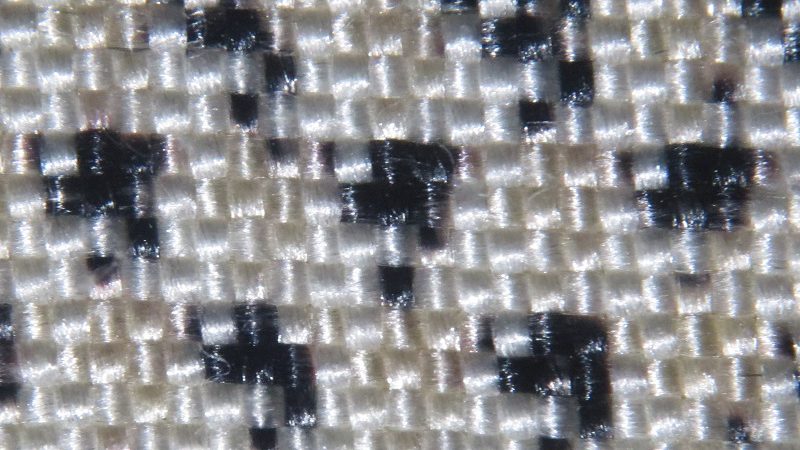
This is where the Hitomoto Kasuri falls apart, which affects the entire impression.
Katasu style has been developed in relatively recent times, which soon occupied the whole Oshima Tsumugi’s market share, while drastically reducing the Hitomoto Oshima Tsumugi. Today, it is very difficult to find the Hitomoto Kasuri Oshima Tsumugi on the kimono market.
The Katasu Oshima Tsumugi, at a glance from inexpert eyes, looks similar with the Hitomoto ones. Furthermore, it is easier and cheaper to weave in much larger quantity. Therefore, at the time when the production quantity is prioritized around 1950s~80s, the retailers and wholesalers ordered more the Katasu and fewer the Hitomoto Oshima tsumugi.
The most of the local weavers are elderly people. The Hitomoto Kasuri weaving requires very hard focus by their eyes. Technically it became more and more difficult and only very few weavers can weave the Hitomoto Kasuri.
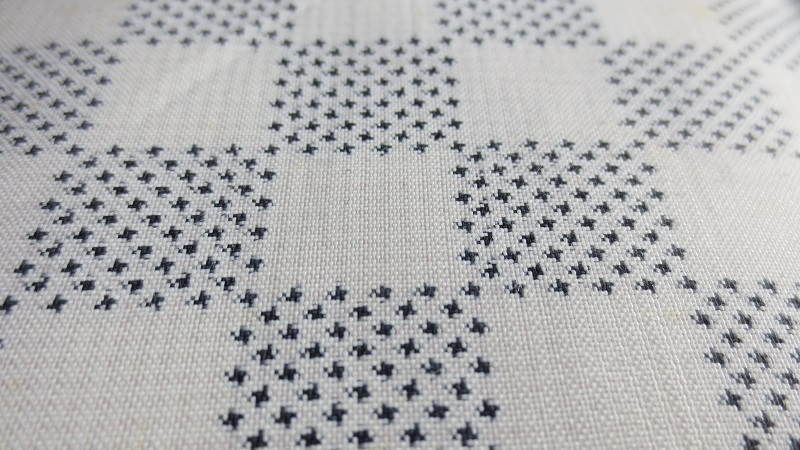
Very carefully woven Hitomoto Kasuri Oshima Tsumugi. Each dots looks vivid and windmill shape.
There are various Kasuri weavings and techniques in Japan. However, the Hitomoto Kasuri technique is only woven by and unique to Oshima tsumugi.
We recommend the authentic Hitomoto Kasuri rather than Katasu fabric when it comes to Oshima Tsumugi. It’s a miracle that we can still see and touch such handcraft technique even today.